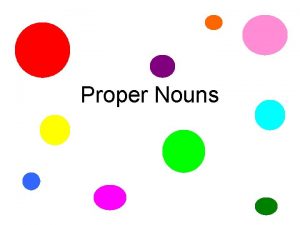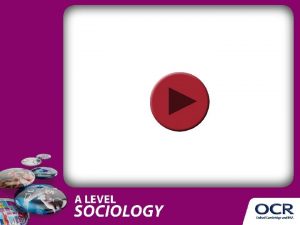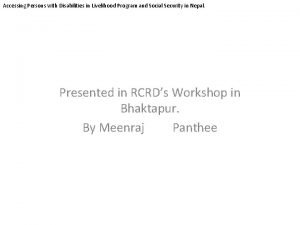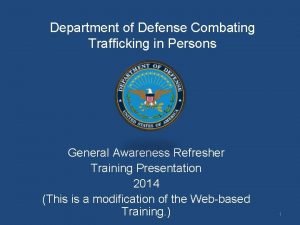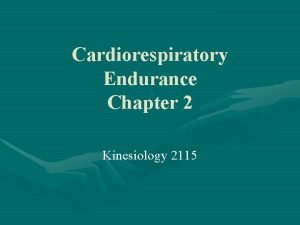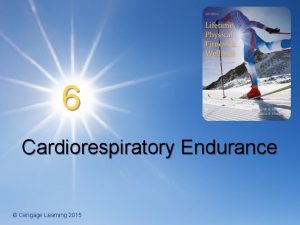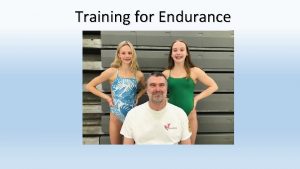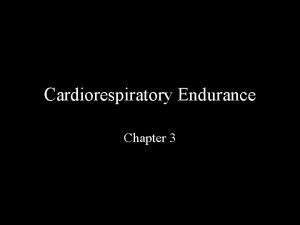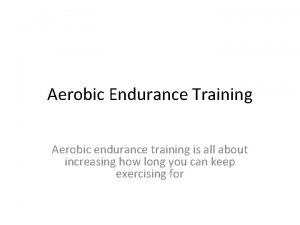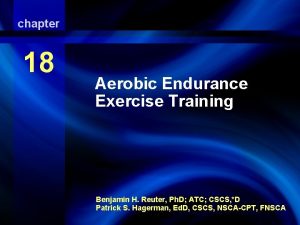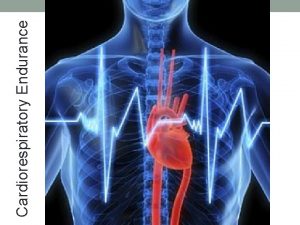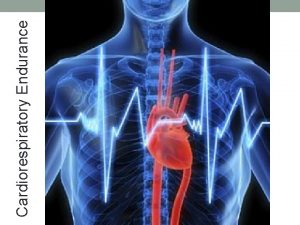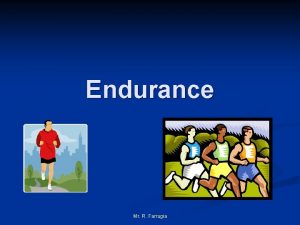Endurance What Is Endurance Endurance Is a persons















- Slides: 15

Endurance

What Is Endurance? Endurance: Is a person’s ability to exert themselves and remain active for a extended period of time.

Two components of endurance: 1 st Cardiovascular endurance: how efficiently your heart, blood vessels, and lungs supply oxygen-rich blood to working muscles during physical activity. 2 nd Muscular endurance: how a muscle or group of muscles can sustain repeated contractions for an extended time.

We are going to look at how endurance can affect a person performance in the water.

How would having low endurance affect you in the water? Let’s think about it. • How could you catch a wave if your shoulder muscles gave out? • How could you paddle out past the break if you had shortness of breath? • We are going to go over how to compensate for these limitations in the next few slides

Signs of low muscle or cardiovascular endurance Soreness Dizziness Localized pain Lightheadedness or headache Muscle cramps Slowed reflexes or responses. Muscles twitching Laying their head down on board Trembling A person should be able to talk while exercising if they are maintaining an safe pace. A weak grip Shortness of breath

While working with someone with low endurance always • Provide moral support and encouragement during the activity. • Check in with them, ask them how they are feeling and how you can help. • Often participants have developed a system that has worked well for them. Don’t assume each person needs help in the same way

Ways to help your athlete with low endurance • Energy conservation is KEY! • Remember the 5 “P”s of energy conservation • Plan • Prioritize • Pace • Positioning • Pursed Lip Breathing.

Plan a appropriate pace while on the water • You have a limited amount of time in the water remember the most important thing is to have fun, not to catch the most waves Stay hydrated, plan out water breaks. • Encourage your participant to drink water even before they feel thirsty, especially on hot days.

Prioritize • Prioritize what is most important. • Ask your athlete what is most important to them: do they want to paddle out, do they want to play in the water or do they want to catch and ride as many waves as possible?

Pace • Start slow and steady. Don’t do too much, too fast. • Exercise should be stopped if the person becomes overly fatigued, dizzy, short of breath, or develops a rapid or irregular heartbeat. • Remember muscle fatigue can improve with rest and recovery. So take a breaks • Getting past the wave break can be very exhausting remember a Pusher or Water safety volunteer will help

Positioning Use the equipment: • A two-person kayak or double wave ski is a great way for you to take on more paddling and to give the participant a break Remember you are part of a team: • You are not alone out there; there are lots of people that can assist. If your athlete's muscles are getting tired or they feel fatigue ask one of the water positions to help.

Pursed lip breathing is a breathing techniques that can be used during the activity, during breaks or after the activity Pursed lip breathing can help you focus, slow your breathing down and stay calm

How to do pursed lip breathing Here is how to do it: 1. Relax neck and shoulder muscles 2. Breath in (inhale) slowly through your nose for 2 counts, keeping your mouth closed 3. Pucker or “purse” your lips as if you were going to flicker the flame of a candle 4. Breath out (exhale) slowly and gently through your pursed lips while counting to 4

Some conditions that effect endurance • Cardiac or Pulmonary impairments • Muscular dystrophy • Multiple sclerosis • Cerebral palsy • Arthritis • Diabetes
 One persons trash is another persons treasure
One persons trash is another persons treasure Sexually dangerous persons act illinois
Sexually dangerous persons act illinois Somatotype graph
Somatotype graph Orgasm disorder
Orgasm disorder Persons essential being
Persons essential being Rumlig synsvinkel
Rumlig synsvinkel The trinity in the bible
The trinity in the bible One face one voice one habit and two persons
One face one voice one habit and two persons What is the proper noun of singer
What is the proper noun of singer Livelihood opportunities for persons with disabilities
Livelihood opportunities for persons with disabilities Ctip for acquisition and contracting professionals
Ctip for acquisition and contracting professionals The principle of respect for persons
The principle of respect for persons Examples of hybrid identity
Examples of hybrid identity Livelihood programs for persons with disabilities
Livelihood programs for persons with disabilities What is trafficking in persons
What is trafficking in persons High close doji
High close doji








